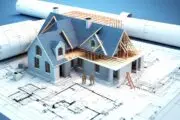Figuring out how to choose the right neighborhood that fits in a fully established area is relatively easy. But what if you’re looking to buy a home in a development that’s yet to be built? What should you consider necessary, and what are the dealbreakers for your dream home?
This article has all the information you need to pick a neighborhood as a homeowner. We’ve broken down the research you should do about the areas where you want to live. We talked to experts such as Marc Lamoureux, the vice president of Zonda Virtual, and George Papaioannou, the vice president of sales, also from Zonda Virtual, for insight on how technology allows buyers to walk around the neighborhood before shovels have hit the ground.

Make a list of what’s truly important to you when you prepare to choose your neighborhood (Photo credit: Monkey Business)
What are some things to consider when choosing a neighborhood?
Ask yourself about the essential features your best neighborhood. What makes an area unique to you? What’s within walking distance? What about property value? Are you concerned about crime statistics? Remember that you’re thinking about your preferences, as well as those of all your family members. So take some time to mull over your wants and needs – you’re looking at finding a good neighborhood that you will love.
• Do you want quiet streets or a busier, active area?
• What about walking to amenities like schools?
• Do you desire access to green space with forests, parks, and other outdoor recreation?
• How vital is your proximity to essential services such as banking, supermarkets, and hospitals?
• Do you need to use public transportation, and if so, how close is it?
• If you drive to work, how far are you willing to drive is a factor to consider.
• Do you want a tight-knit community, or are you seeking to fly under the radar and remain largely anonymous in your perfect neighborhood?
Quiet vs. busy: what to consider when choosing a neighborhood
Quiet streets might be perfect for you if you’ve got a young family and are buying a house. There are other considerations, too, when looking to find a neighborhood. What if you work from home or your job involves shift work where you need to sleep during the day? You’ll benefit from a quieter area where you can decompress and relax whenever necessary.
But suppose you thrive in an environment with much to do at any time of the day or night, and you can sleep through noises. In that case, you might like living in an upcoming development in a busier area of a large city or a condominium downtown.
Walking to amenities
Again, this may be a priority if you have small children. Their ability to walk to good schools in your prospective neighborhood can make your life a lot easier. Your builder or city council may have information about upcoming schools in the area and their grade level. Consider how long you might want to stay in this home. Do you want your children to walk to school once they are in older grades?

Walking around the neighborhood you’re considering might help you to decide if it’s right for you (Photo credit: Monkey Business)
Access to forests, parks, and recreation
The development you’re considering might be near a large forest or significant park, so you’ll know the type of outdoor space nearby. Take some time to explore these areas and try to go at different times of the day. What’s the ease of access? Do they allow pets (and is there an off-leash area for dogs)? Do you feel safe there?
Ask your builder about future recreation options. For example, developers will often build a recreation center to be used by an extensive development or neighborhood. This center can include everything from daycare services to indoor basketball courts, soccer fields, and skating rinks.
Proximity to essential services like banking, supermarkets, and hospitals
You don’t want to drive out of your way whenever you need to go to an ATM or pick up a forgotten ingredient for dinner. So, again, take some time to explore where your new home will be built. Is the supermarket to your liking, or do you prefer a different option? If so, how far away is your preference? Can you find a bank branch nearby, or is it a bit of a drive? And as much as you don’t want to think about it, you or your family may need medical treatment in your new home. It’s best to know if there’s a hospital nearby. If so, what services do they offer? Do they have a birthing unit and an emergency department?
Do you need or want access to public transportation?
If your development is on the edge of a larger city, you might benefit from access to public transportation for easier commuting. If public transit is already near your new home, try taking it to work or other destinations you might visit regularly. Does it feel safe and comfortable? Does it run during the peak times when you’ll need it? How long would your commute take? Your builder or city council should have information about upcoming transit lines or train stations to come into your area.
What about if you drive to work?
Look at where your new home will be built and how close it will be to the nearest freeways or main roads. How long will the commute take? Will you be driving during the busiest times of the day? Are traffic jams common? Only you can decide what’s an acceptable amount of time commuting to and from work. Be honest with yourself, and if the drive is too long, you may want to consider a home in an area that’s closer.
Tight-knit community or unknown neighbors?
Some people enjoy getting to know everyone in their neighborhood. They view their daily interactions as rewarding, and the neighborhood children grow close as they all grow up together. There’s something to be said for having people you can count on next door or a few houses down, whether it’s to water your plants and grab your mail while you’re away or even keep an eye on your kids outside while you run to the grocery store for a moment.
But others prefer to keep to themselves. Their home is their sanctuary and is considered a private place. They may despise small talk or are generally uncomfortable getting to know new people. If your development is an addition to an already built area, you might be joining a vibrant, established community. However, if all the homes are being constructed in a brand-new area, everyone will likely be strangers. Ultimately, how friendly you want to be with your new community is up to you.
When looking at an unbuilt development, deciding how to pick a neighborhood can be tricky. However, there’s still plenty to investigate.
Talk to your builder to choose the right neighborhood
The sales representative at your new development should provide information about what’s to come in the area—knowing what amenities will help to sell the development to prospective buyers. Other developments will have different priorities. For example, the amenities for a family-focused development won’t be the same as those included in a development aimed at the 55-plus crowd.
Your builder should have a basic idea of what else is included in the development, but feel free to ask them about what could be coming down the road in five to ten years. This can be anything from shopping centers to firehouses. If you can’t get the answers you’re looking for, investigate with your local chamber of commerce and city council.
Check out the crime rates in your new neighborhood
Unless your development is in a new area, the town or suburb should have some statistics on crime that are readily available online. If the city where you’re planning to move to is small, this information may only be available in the newspaper. Don’t hesitate to contact local law enforcement if you need additional information. Most police stations will also provide details on how active the community is if they are involved in crime prevention or community policing.
Consider what your current neighborhood is lacking
If you have young children, you could be aching for a safe place for them to play that’s visible from your home. If you have a pet, you may have difficulty finding well-maintained walking paths or areas where you feel safe at night. Or perhaps you’re a die-hard coffee junkie who wants a quality place to hang out and get a daily fix. You need to look beyond the basic needs to decide if you will be happy in your neighborhood.

You won’t get a full picture of what your neighborhood is going to look like during construction (Photo credit: Andy Dean)
How Zonda Virtual can help you in choosing the right neighborhood
Zonda Virtual creates 3-D mapping that allows you to get a feel of the neighborhood long before its completion. George Papaioannou and Marc Lamoureux have made it easier for new homebuyers to view their fully established community before its build date.
“You’ll be able to see a full community in 3-D,” Papaioannou said. “We use drone shots for the surrounding areas because the top view of Google Earth or Google satellite map will not give you the view of different topography, such as mountains. So if you have drone shots, you’ll get a better experience of the surrounding real world.”
With VR, you can move around and visualize the future community we’ve included in the existing area. So, I can go up the street and start walking. And then, on the screen at the bottom, there’s a carousel to show every single plan offered in that community. So, not only can you walk the neighborhood, but you can also visit every single house type within it.”
“There is nothing appealing about a community when it’s under construction,” Lamoureux said. But with our VR system, I can click on an amenity that the builder has included, like a park, and I can start looking around to see how it will appear in real life. None of the community exists yet. It’s still just a piece of dirt in the real world.”
Check out Zonda Virtual’s indoor example views if you want to learn more.
Figuring out how to pick a neighborhood when it hasn’t been built can initially seem daunting. However, with the help of your builder and some online tools, you’ll get a great idea of what the right community includes and which one suits your family best.






